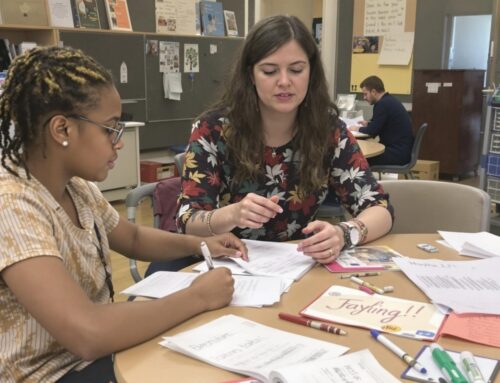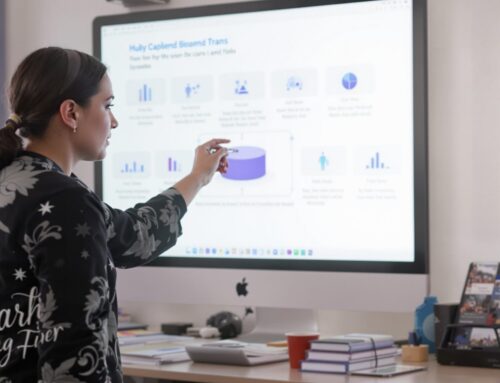How to Improve Your Spelling Skills Fast
Research demonstrates that targeted spelling interventions can produce remarkable results, with students achieving up to 15 months of improvement in just 8 months of focused instruction. How to Improve Spelling becomes much more effective when you combine proven strategies that address different learning styles and provide immediate feedback for faster mastery.
Key Takeaways
- Tactile strategies like using Scrabble pieces can lead to perfect test scores within one week of intervention
- Word study approaches that group words by structural patterns significantly outperform traditional spelling methods
- Morphographic instruction yields 11-15 month gains in spelling ability within 8 months
- Multisensory activities engage different learning modalities for faster retention
- Regular progress tracking with pre and post-tests helps students move from “Did Not Meet” to “Met Expectations”
Use Research-Backed Spelling Strategies for Quick Results
Effective Spelling Tips start with understanding that different learners respond to different approaches. According to research from the University of Nebraska Omaha, phonetic, tactile, and digital strategies each support unique learning preferences. The most impressive results come from tactile approaches—students using Scrabble pieces achieved perfect scores of 15/15 within just one week of intervention.
Chunking represents another powerful technique for rapid improvement. This method breaks words into syllables or morphemes, helping your brain recognize patterns more effectively. Research shows students using chunking strategies also achieved post-test scores of 15/15, demonstrating how pattern recognition accelerates learning.
Leverage Word Study and Pattern Recognition
The Word Study Strategy transforms how you approach spelling by grouping words with structural similarities. Research published by RSIS International reveals that students using this method improved their mean test scores from 49.51 to significantly higher levels, clearly outperforming traditional instruction groups who started with mean pretest scores of 20.51.
Pattern recognition becomes automatic when you consistently practice with word families. Your brain starts identifying morphological connections between words, making it easier to spell unfamiliar terms by recognizing familiar roots, prefixes, and suffixes.
Practice with Spelling Lists and Immediate Feedback
Structured practice with spelling lists accelerates improvement, especially when combined with immediate error correction. The Cover-Copy-Compare method ensures spelling becomes automatic by providing instant feedback. According to the University of Iowa IRRC, this approach works particularly well for high-frequency words and builds confidence through repeated success.
Small group practice delivers better engagement than individual study. Research shows that personalized attention during spelling practice leads to higher retention rates and more sustained improvement over time.
Incorporate Multisensory Activities
Multisensory learning engages multiple pathways in your brain simultaneously. These activities prove especially effective for English Skills development:
- Writing words in sand or salt trays
- Using letter manipulatives to build words
- Tracing letters while saying sounds aloud
- Typing words while visualizing their structure
Research confirms that tactile-based strategies produce immediate improvements, with students achieving perfect posttest scores after hands-on interventions. These methods work particularly well for learners who struggle with traditional visual-only approaches.
Emphasize Phonics and Morphographs
Phonics instruction forms the foundation of spelling success by teaching sound-letter correspondences. However, English spelling requires understanding that the same sound can be spelled multiple ways—like /ɛ/ spelled as ‘e’ in “hen” or ‘ea’ in “head.” According to research from Washington University in St. Louis, exposure to these variations strengthens overall spelling ability.
Morphographic instruction takes phonics further by teaching word construction through roots, prefixes, and suffixes. Studies show this approach yields substantial gains across diverse learner populations, including those with significant spelling delays. The Journal of Direct Instruction reports that morphographic strategies produce lasting improvements that persist beyond the instruction period.
Make Use of Digital Tools and Apps
Digital spelling programs support practice and assessment, though they work best when combined with hands-on methods. These top-rated programs offer structured Writing Skills development:
- Spelling Power for systematic skill building
- Spelling Mastery for comprehensive instruction
- Spelling Through Morphographs for advanced learners
Balance digital tools with tactile activities for optimal results. Research suggests that purely digital interventions don’t match the effectiveness of combined approaches that include physical manipulation and group interaction.
Track Progress for Motivation and Adjustment
Regular assessment drives improvement by identifying weak areas and celebrating progress. Research shows students moved from “Did Not Meet Expectations” to “Met Expectations” after targeted intervention, measured against a 75% proficiency threshold. Use descriptive statistics like mean scores and standard deviation to monitor your gains objectively.
Celebrating small victories maintains motivation throughout your Self Improvement journey. Each incremental gain builds confidence and reinforces positive learning habits that accelerate long-term success.
Why Spelling Proficiency Matters for Your Success
Spelling proficiency connects directly to improved reading fluency, writing quality, and overall academic achievement. Research supports direct spelling instruction for both general and special education students, with studies showing notable long-term gains that extend well beyond the instruction period.
Strong spelling skills enhance professional communication and academic success. When you master spelling patterns and word construction principles, you develop literacy skills that support lifelong learning across all subjects and career paths.
Sources
- Spelling Power – Basic Approaches to Teaching Spelling
- University of Nebraska Omaha – Spelling Intervention Strategies
- Journal of Direct Instruction – Best Practices in Spelling Instruction
- University of Iowa IRRC – Where Have All the Spelling Lists Gone
- RSIS International – The Efficacy of Word Study Strategy
- Washington University in St. Louis – Statistical Learning and Spelling
news via inbox
Get our best unfiltered stories and boldest ideas delivered straight to your inbox.

























